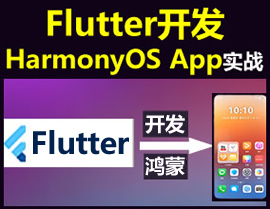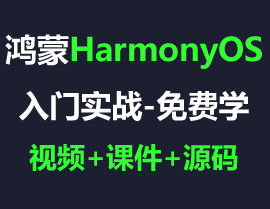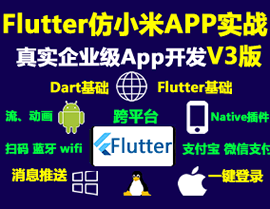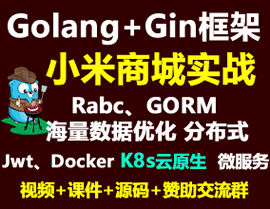Flutter Shopify API集成插件woosignal_shopify_api的使用
Flutter Shopify API集成插件woosignal_shopify_api的使用
概述
WooSignal Shopify API 插件(woosignal_shopify_api)帮助开发者更轻松地构建与 Shopify 集成的应用程序。本文将介绍如何在 Flutter 项目中使用该插件,并提供完整的示例代码。
官方链接
开始使用
添加依赖
在您的 Flutter 项目的 pubspec.yaml 文件中添加以下依赖项:
dependencies:
...
woosignal_shopify_api: ^2.2.1
导入包
在 Dart 文件中导入 woosignal_shopify_api 包:
import 'package:woosignal_shopify_api/woosignal_shopify_api.dart';
使用示例
初始化 WooSignal
首先,您需要初始化 WooSignal Shopify API 实例并传入您的应用密钥(app key):
await WooSignalShopify.instance.init(appKey: "your app key");
获取产品列表
下面是一个简单的例子,展示如何获取产品列表并在 UI 中显示第一个产品的名称:
class _MyHomePageState extends State<MyHomePage> {
String? _productName;
_incrementCounter() async {
// 初始化 WooSignal Shopify API
await WooSignalShopify.instance.init(appKey: "your app key");
// 调用 API 获取产品列表
ShopifyProductResponse? shopifyProductResponse =
await WooSignalShopify.instance.getProducts();
if ((shopifyProductResponse?.products ?? []).isNotEmpty) {
_productName = shopifyProductResponse?.products?[0].title ?? "";
}
setState(() {});
}
@override
Widget build(BuildContext context) {
return Scaffold(
appBar: AppBar(
title: Text(widget.title),
),
body: Center(
child: Column(
mainAxisAlignment: MainAxisAlignment.center,
children: <Widget>[
Text('Tap the light bulb to get a product'),
if (_productName != null)
Text(
'Shopify product :\n $_productName',
),
],
),
),
floatingActionButton: FloatingActionButton(
onPressed: _incrementCounter,
tooltip: 'Increment',
child: Icon(Icons.lightbulb_outline),
),
);
}
}
可用的 API 请求
产品操作
-
获取产品列表
ShopifyProductResponse? shopifyProductResponse = await WooSignalShopify.instance.getProducts(); -
通过 ID 获取单个产品
Product? product = await WooSignalShopify.instance.getProduct(productId: "product_id_here"); -
搜索产品
ShopifyProductSearch? searchResult = await WooSignalShopify.instance.productSearch(query: "search_term");
购物车操作
-
验证购物车中的商品库存
List<Map<String, dynamic>> cartItems = [...]; // 填充您的购物车项目 List<Map<String, dynamic>> validatedCartItems = await WooSignalShopify.instance.cartCheck(cartItems);
订单管理
-
创建订单
ShopifyOrder order = ShopifyOrder(...); // 创建订单对象 OrderCreatedResponse? response = await WooSignalShopify.instance.createOrder(order); -
获取订单详情
OrderResponse? orderDetails = await WooSignalShopify.instance.getOrder(orderId: "order_id_here");
客户管理
-
客户登录
AuthCustomer? customer = await WooSignalShopify.instance.authCustomerLogin(email: "customer_email", password: "customer_password"); -
客户注册
AuthCustomer? newCustomer = await WooSignalShopify.instance.authCustomerRegister(email: "new_customer_email", password: "new_customer_password", firstName: "John", lastName: "Doe");
店铺信息
-
获取店铺详情
ShopResponse? shopDetails = await WooSignalShopify.instance.getShop(); -
检查应用状态
bool isAppReady = await WooSignalShopify.instance.checkAppStatus();
示例 Demo
以下是完整的 Flutter 应用示例,展示了如何使用 woosignal_shopify_api 获取和显示 Shopify 产品:
import 'package:flutter/material.dart';
import 'package:woosignal_shopify_api/models/response/shopify_product_response.dart';
import 'package:woosignal_shopify_api/woosignal_shopify_api.dart';
void main() {
runApp(MyApp());
}
class MyApp extends StatelessWidget {
@override
Widget build(BuildContext context) {
return MaterialApp(
title: 'WooSignal Demo',
theme: ThemeData(
primarySwatch: Colors.blue,
),
home: MyHomePage(title: 'WooSignal Demo Home Page'),
);
}
}
class MyHomePage extends StatefulWidget {
MyHomePage({super.key, required this.title});
final String title;
@override
createState() => _MyHomePageState();
}
class _MyHomePageState extends State<MyHomePage> {
String? _productName;
_incrementCounter() async {
// 初始化 WooSignal Shopify API
await WooSignalShopify.instance.init(appKey: "your_app_key");
// 调用 API 获取产品列表
ShopifyProductResponse? shopifyProductResponse =
await WooSignalShopify.instance.getProducts();
if ((shopifyProductResponse?.products ?? []).isNotEmpty) {
_productName = shopifyProductResponse?.products?[0].title ?? "";
}
setState(() {});
}
@override
Widget build(BuildContext context) {
return Scaffold(
appBar: AppBar(
title: Text(widget.title),
),
body: Center(
child: Column(
mainAxisAlignment: MainAxisAlignment.center,
children: <Widget>[
Text('Tap the light bulb to get a product'),
if (_productName != null)
Text(
'Shopify product :\n $_productName',
),
],
),
),
floatingActionButton: FloatingActionButton(
onPressed: _incrementCounter,
tooltip: 'Increment',
child: Icon(Icons.lightbulb_outline),
),
);
}
}
此示例展示了如何从 Shopify 获取产品列表并在点击按钮时更新 UI 显示第一个产品的名称。请确保替换 "your_app_key" 为您自己的应用密钥。
更多关于Flutter Shopify API集成插件woosignal_shopify_api的使用的实战系列教程也可以访问 https://www.itying.com/category-92-b0.html
更多关于Flutter Shopify API集成插件woosignal_shopify_api的使用的实战系列教程也可以访问 https://www.itying.com/category-92-b0.html
在Flutter项目中集成Shopify API,使用woosignal_shopify_api插件可以方便地与Shopify商店进行交互。以下是一个简单的代码案例,展示了如何使用该插件进行基本的API调用。
首先,确保你的Flutter项目已经添加了woosignal_shopify_api依赖。在pubspec.yaml文件中添加以下依赖:
dependencies:
flutter:
sdk: flutter
woosignal_shopify_api: ^最新版本号 # 请替换为实际的最新版本号
然后,运行flutter pub get来安装依赖。
接下来,在你的Flutter项目中,你可以按照以下步骤使用woosignal_shopify_api插件:
- 导入插件
在你的Dart文件中导入插件:
import 'package:woosignal_shopify_api/woosignal_shopify_api.dart';
- 初始化Shopify客户端
你需要提供Shopify商店的域名和访问令牌来初始化客户端。通常,这些信息会从用户登录或设置中获取。
class ShopifyService {
ShopifyClient? _shopifyClient;
Future<void> initializeShopifyClient(String domain, String accessToken) async {
_shopifyClient = await ShopifyClient.create(
domain: domain,
accessToken: accessToken,
);
}
ShopifyClient? get shopifyClient => _shopifyClient;
}
- 进行API调用
一旦客户端初始化完成,你就可以使用它来进行各种API调用。例如,获取商店的产品列表:
class ProductRepository {
final ShopifyService _shopifyService;
ProductRepository(this._shopifyService);
Future<List<Product>> fetchProducts() async {
final shopifyClient = _shopifyService.shopifyClient;
if (shopifyClient == null) {
throw Exception('Shopify client is not initialized.');
}
final response = await shopifyClient!.graphQLQuery(
query: """
query {
products(first: 10) {
edges {
node {
id
title
handle
images(first: 1) {
edges {
node {
originalSrc
}
}
}
variants(first: 1) {
edges {
node {
price
}
}
}
}
}
}
}
""",
);
// 解析响应数据(这里只是简单示例,实际项目中应更详细地处理错误和数据解析)
if (response.hasErrors) {
throw Exception('GraphQL query failed: ${response.errors!.join('\n')}');
}
final data = response.data!['products']['edges'] as List;
return data.map((edge) {
final node = edge['node'] as Map<String, dynamic>;
return Product(
id: node['id'] as String,
title: node['title'] as String,
handle: node['handle'] as String,
imageSrc: node['images']['edges'].isNotEmpty
? node['images']['edges'][0]['node']['originalSrc'] as String
: '',
price: node['variants']['edges'].isNotEmpty
? node['variants']['edges'][0]['node']['price'] as String
: '',
);
}).toList();
}
}
class Product {
final String id;
final String title;
final String handle;
final String imageSrc;
final String price;
Product({
required this.id,
required this.title,
required this.handle,
required this.imageSrc,
required this.price,
});
}
- 使用Repository
在你的UI层或业务逻辑层中使用ProductRepository来获取产品列表并显示:
void main() {
runApp(MyApp());
}
class MyApp extends StatelessWidget {
@override
Widget build(BuildContext context) {
return MaterialApp(
home: ShopifyProductList(),
);
}
}
class ShopifyProductList extends StatefulWidget {
@override
_ShopifyProductListState createState() => _ShopifyProductListState();
}
class _ShopifyProductListState extends State<ShopifyProductList> {
late ShopifyService shopifyService;
late ProductRepository productRepository;
List<Product> products = [];
@override
void initState() {
super.initState();
shopifyService = ShopifyService();
productRepository = ProductRepository(shopifyService);
// 假设你已经有了domain和accessToken
final String domain = 'your-shopify-store.myshopify.com';
final String accessToken = 'your-access-token';
shopifyService.initializeShopifyClient(domain, accessToken).then((_) {
fetchProducts();
});
}
Future<void> fetchProducts() async {
try {
final fetchedProducts = await productRepository.fetchProducts();
setState(() {
products = fetchedProducts;
});
} catch (e) {
print('Error fetching products: $e');
}
}
@override
Widget build(BuildContext context) {
return Scaffold(
appBar: AppBar(
title: Text('Shopify Products'),
),
body: ListView.builder(
itemCount: products.length,
itemBuilder: (context, index) {
final product = products[index];
return ListTile(
leading: Image.network(product.imageSrc),
title: Text(product.title),
subtitle: Text('Price: \$${product.price}'),
);
},
),
);
}
}
请注意,上述代码是一个简化的示例,用于展示如何使用woosignal_shopify_api插件进行基本的Shopify API调用。在实际项目中,你需要处理更多的错误情况、优化数据解析,并可能需要添加更多的功能和API调用。同时,确保你的Shopify商店的域名和访问令牌是安全存储和管理的。








